Bashkir national costume

Historical reference
The history of the development of the Bashkir national costume is fascinating and varied. Art workers studying the creation of traditional clothes of different peoples still admire the origin of the attire of Bashkiria.

The Bashkir people settled on a very large territory, as a result of which each region has a special mentality. This was due to the fact that the activities of people directly depended on natural resources, which were the most in their area. In one part of Bashkiria, the inhabitants were engaged in hunting and cattle breeding, in another, preference was given to applied art, in the third - to agriculture.



There were seven regions in total:
- Northeastern;
- Northwestern;
- Southeastern;
- Southwestern;
- Central;
- Oriental;
- Samara-Irgiz.
But even despite some detailed differences in clothing among residents of different regions, the Bashkir national costume surprisingly retains one culture, the same traditions, conveys a special folk spirit. This is what makes him interesting.


Costume description
A notable feature of the national dress of Bashkiria is its multi-layered structure. Even if the sun was beating mercilessly on the street, the Bashkirs were sure to put on several layers of outer clothing. This is what distinguishes the Bashkir people from the rest.

The main element of the national costume of the Bashkir people is called "kazakin". It is an outerwear that looks like a fitted jacket with spacious sleeves, equipped with a reliable lining. Kazakin was fastened with buttons.This product was versatile - it was worn with pleasure by both women and men. Soldiers also put on the Kazakin.
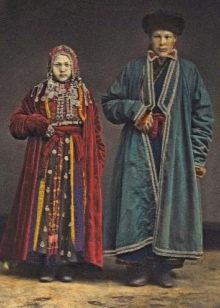


Materials and style
The people of Bashkiria have never been indifferent to luxury, and this quality is perfectly reflected in the traditional costume. People from wealthy families wore clothes made of white satin, expensive velvet, silk and satin.

Cotton products were no less popular. The Bashkirs, whose wallets were not so filled with coins, mainly possessed outfits made of sheepskin, home cloth and felt. Hemp and nettle canvases were often used.
The decorative elements were chic furs, leather, interesting with gold and silver embroidery, beads and even coins.

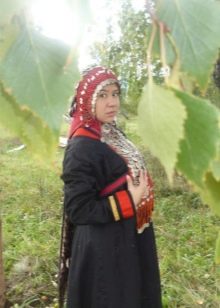

Religion played an important role in the life of the Bashkirs, so some canons had to be observed when creating a national costume. Clothing should not be too revealing, so that women cannot demonstrate the natural dignity of their bodies to strangers. So the style of the traditional outfit is very loose.

Spacious shirts, trousers and dressing gowns - these were the things that the standard wardrobe of Bashkir men and women consisted of.

Color palette
The Bashkirs didn’t skimp on a variety of shades in their national costume!
Casual clothes could not boast of special brightness, however, it is simply impossible to take your eyes off the outfit. At first glance, ordinary shades are unusually skillfully combined in a suit, forming an ideal composition, which even in the twentieth century excites the imagination of talented designers.

Colors predominated in everyday suits:
- Red.
- Brown.
- Blue.
- Black.
- Green.
- Yellow.

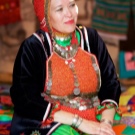




Many other shades were used for sewing holiday dresses. Festivities at the festival have always meant a lot for the Bashkir people, so it is not surprising that everyone wanted to stand out as much as possible from the rest during a feast and traditional entertainment.
The ornament of the national costume has always had a symbolic meaning. Floral patterns, images of animals and other ethnic symbols protected people from damage and attracted good luck.

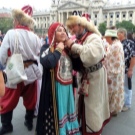

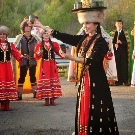

Female outfit
The traditional outfit of a Bashkir girl is still slowly modifying. It is important for women to always be at their best, to attract interested glances to themselves, and the female costume of Bashkiria does an excellent job of fulfilling this desire.
- Not a single girl could imagine herself without a national dress called kuldek. The dress was decorated with embroidery. Initially, the kuldek was characterized by wide necklines, a turn-down collar and a twine in the chest area, but the twentieth century brought a change to the usual look of the dress. The robe has acquired a lapel and tucks on the chest.

- There was a bib over the dress. It was believed that this product protects against evil spirits.
- Rich Bashkir women could also afford to wear a camisole. This attribute expressed the position of a person on the social ladder. The camisole was decorated with a large number of silver coins.


- Under the kuldek, the girls wore yyshtan - comfortable pants.
- Al'yapkys (apron) Bashkirs use in two cases - either doing household chores, or going to a solemn event. An apron designed for the holidays looks much more elegant.

Wedding outfit
Wedding is the main celebration of the Bashkir people! Careful preparation was undertaken and the bulk of this preparation was given to clothing. In order for the wedding dress to amaze all the guests, the family of the betrothed paid huge amounts of money to the women who had the best talent for embroidery.
- Women's dresses were trimmed with graceful ribbons. The frills of the wedding suits emphasized the individual qualities of the bride.
- The color scheme had a special meaning.Red shades symbolized the warmth of the hearth, and white was considered a sign of the sun and family well-being.
- The bride's legs were in white boots, for the manufacture of which the thin skin of goats was used.

- The head of the Bashkir girl was under an airy headscarf.
- The bride is responsible for the wedding shirt for the groom. The Bashkir woman herself sewed a product from red fabric and presented it to her future husband just before the start of the wedding.

Mens clothing
Bashkir men were not so picky about their attire, so the men's national costume is a little less diverse, but no less magnificent. Looking at the Bashkir, you would see a loose shirt, pants and a dressing gown that was replaced by a camisole. This is a casual version of a traditional outfit.

There are two types of Bashkir shirt:
- In the southern region, men wore shirts with an oblique cut that was fastened with a cord. There was no collar on the item.
- The shirts of the inhabitants of the northern part of the country had a collar, and the cut was straight.



Outerwear consisted of chekmeni - robes made of woolen material, always decorated in a rich green color, which is a symbol of nobility and masculinity. In addition to the dressing gown, men could boast of a kazeki caftan with a high collar and a flared cut.


The quality of the material made it clear how much the man had. If the robe was made of fabric woven at home, it became clear to everyone that the Bashkirs had not been able to acquire wealth.
In the winter season, the Bashkirs walked the streets in sheepskin coats and sheepskin coats.

Children's variation
The appearance of the children's national costume of Bashkiria differs very little.
The outfit for a girl looks exactly the same as the adult version, with one exception - girls under the age of ten were forbidden to wear a headdress with a veil, called "takya".




Boys were instilled in patriotism from childhood, so there were no restrictions on their costume. The outfit of the young men repeated in detail the clothes of their fathers. The boys wore the traditional belt, the attention-grabbing rich gold pattern, as well as tight-lacing shirts and trousers.


Shoes
Attractive tassels adorned women's shoes. In the summer, the girls wore sabats (if you Russify the name, you get ordinary bast shoes), under which they wore stockings without fail. For their creation, cloth and wool were used. In case of a holiday, the woman had decorated hosiery.

Bashkir men could also use stockings, but the bulk of them replaced them with footcloths.
Saryk and Itek boots were considered standard men's footwear. During the celebration, the Bashkirs put these boots aside and appeared in public in beautiful igichi. In order not to get them dirty on the way to the holiday, I had to put on galoshes on top. Once on the threshold of the house, where the fun took place, the galoshes were removed and remained in the igichi.


Hats
The Bashkirs paid a lot of attention to headdresses. This accessory set the tone for the entire image of a representative of the Bashkir nation. The headdress showed others a lot of facts - what is the financial condition of the owner, how old he is ... And precious stones not only adorned the product, but also performed the function of a talisman.

The list of men's hats is not numerous - a skullcap and a fur hat. Bashkirs professing Islam were not allowed to appear before the gaze of society with their heads uncovered. The hats of the young men were decorated in light shades, and the hats of the elderly people inspired respect with a dark color scheme.

The range of women's headwear was amazing. Girls could choose a product for every taste and color.
In the event that the spouse of a Bashkir woman possessed a large fortune, she could arouse envy of other ladies, because the richest headdress, the kashmau, was available to her. The accessory is a hat with a hole on the crown.A long ribbon, embroidered with bright beads and complemented by fringes, flowed down from the model.


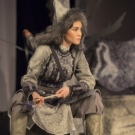


Reviews
The drawing of the costume of the Bashkir nation will not leave anyone indifferent. The responses of people who got acquainted with the traditional costume of Bashkiria express their utter delight. The robe helps to feel like a truly majestic girl, to feel the wisdom of the people.









